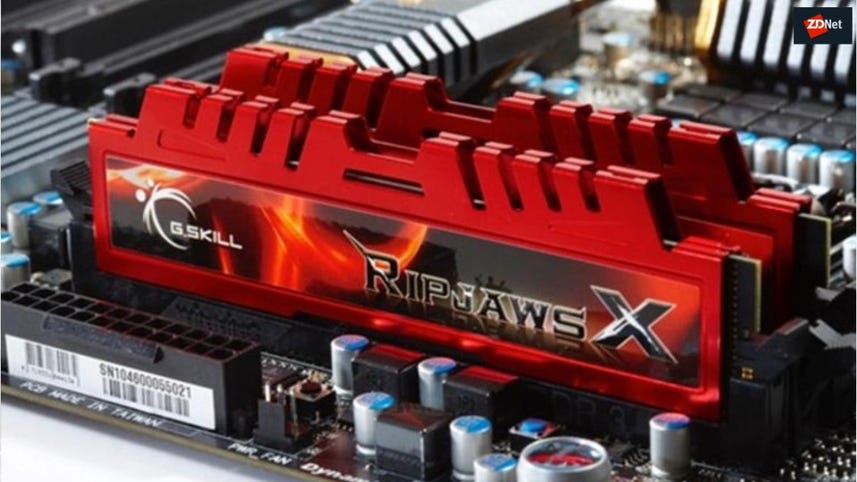Random access memory — often referred to as “RAM” — is vital for your computer system to open, run, and manage programs, applications, and services. Most computers nowadays come standard with at least 8GB of RAM, but for gamers, professionals, and power users, don’t be surprised to see kits with three to four times as much.
What if you’re on the other end of the spectrum? Perhaps your needs are less demanding and you’d rather spend the RAM money on something better suited. Here is a definitive guide to how much RAM your Windows 10 PC needs. Chances are, you already have enough.
The bare minimum for the 32-bit version of Windows 10
1GB of RAM is the minimum system requirement for the 32-bit version of Windows 10, and while I’ve gotten Windows 10 to run on this much RAM, I don’t recommend it.
1GB of RAM is just enough for basic operations like web browsing (although don’t expect to run a browser with dozens of tabs open), email, word processing, and light image editing.
But even these basic tasks are going to be painful, so do yourself a favor and avoid 1GB of RAM if you can.
The bare minimum for the 64-bit version of Windows 10
2GB of RAM is the minimum system requirement for the 64-bit version of Windows 10. You might get away with less, but the chances are that it’s going to make you yell a lot of bad words at your system!
With 2GB you should be able to do pretty much everything with your computer that a computer is capable of doing. You can game, edit images and videos, and run suites like Microsoft Office, and have a dozen browser tabs open for all your multitasking needs. Sure, the shortage of RAM is going to be a bottleneck on your system, but 2GB is enough to get some real work done.
2GB is also enough to run a hardcore suite of apps like Adobe Photoshop (or so says Adobe, I wouldn’t want to try it), but to be honest, if you’re paying that sort of money for software, you may want to invest in more RAM!
The bottom line is that if you’ve got a system with 2GB of RAM and it feels slow, add more RAM. If you can’t add more RAM, then you’re probably out of luck when it comes to speeding up your system.
More: The 10 best Windows laptops in 2022
4GB RAM
If you’re running a 32-bit operating system with 4GB of RAM installed, you’ll only be able to access around 3.2GB due to memory addressing limitations. However, with a 64-bit operating system, you’ll have full access to the whole 4GB.
The difference in performance between a system with 2GB of RAM and one with 4GB is night and day. Even on a 32-bit system that limits the RAM to a little over 3GB, the performance boost is well worth the cost. Not only do applications run faster, but you can also run more applications simultaneously, which comes in handy if you run suites like Microsoft Office or Adobe Creative Cloud.
If you have a 64-bit operating system, then bumping the RAM up to 4GB is a no-brainer.
All but the cheapest and most basic of Windows 10 systems will come with 4GB of RAM.
8GB RAM
Note: You will need a 64-bit operating system to make use of 8GB RAM or more.
Now we’re into performance territory. If you’re serious about your PC, then I consider 8GB RAM your new default.
If you’re buying or building a machine dedicated to photo or HD video editing and rendering, or just want a fast system, then 8GB of RAM is the minimum you should consider to avoid frustration.
This is the amount of RAM recommended by Adobe for users running Creative Cloud applications.
8GB of RAM is not expensive. Sure, get the OEM to fit it into a new system and you’re likely paying a premium (especially if that OEM is Apple), but from an aftermarket supplier, this can be had for under $40.
8GB is the minimum amount of RAM new Macs ship with.
See also: The Best 5 RAM Top memory upgrades for your PC
16GB RAM
Is there a case for more than 8GB of RAM? Sure there is, but the bang for the buck trails off.
The time when more than 8GB of RAM becomes useful and starts paying for itself is when you’re running several resource-heavy applications simultaneously — especially image or video processing (even 4K video), CAD, or 3D modeling.
To really feel the difference, try running Premiere Pro, Photoshop, and After Effects side-by-side on a system with 8GB of RAM.
Having more than 8GB also comes in handy if you make extensive use of virtualization tools such as Microsoft Hyper-V or VMware Workstation, especially if you run multiple virtual machines simultaneously.
16GB+ RAM
You’re now deep in the realm of heavy lifting. A workstation with more than 16GB of RAM will be a do-anything system. This is the sort of system that will be able to run multiple resource-heavy applications or virtual machines simultaneously.
Remember that 64-bit Windows 10 Pro, Enterprise, and Education will support up to 2TB of RAM, while the 64-bit version of Windows 10 Home is limited to only 128GB.
Bear in mind that how much RAM your system supports, along with the type and speed, will depend on your motherboard. Consult your PC/motherboard manual, or, if your PC was manufactured by an OEM, use a system checker such as the one found on Crucial.com to find out what RAM is compatible with your system.
For all the latest Technology News Click Here
For the latest news and updates, follow us on Google News.

